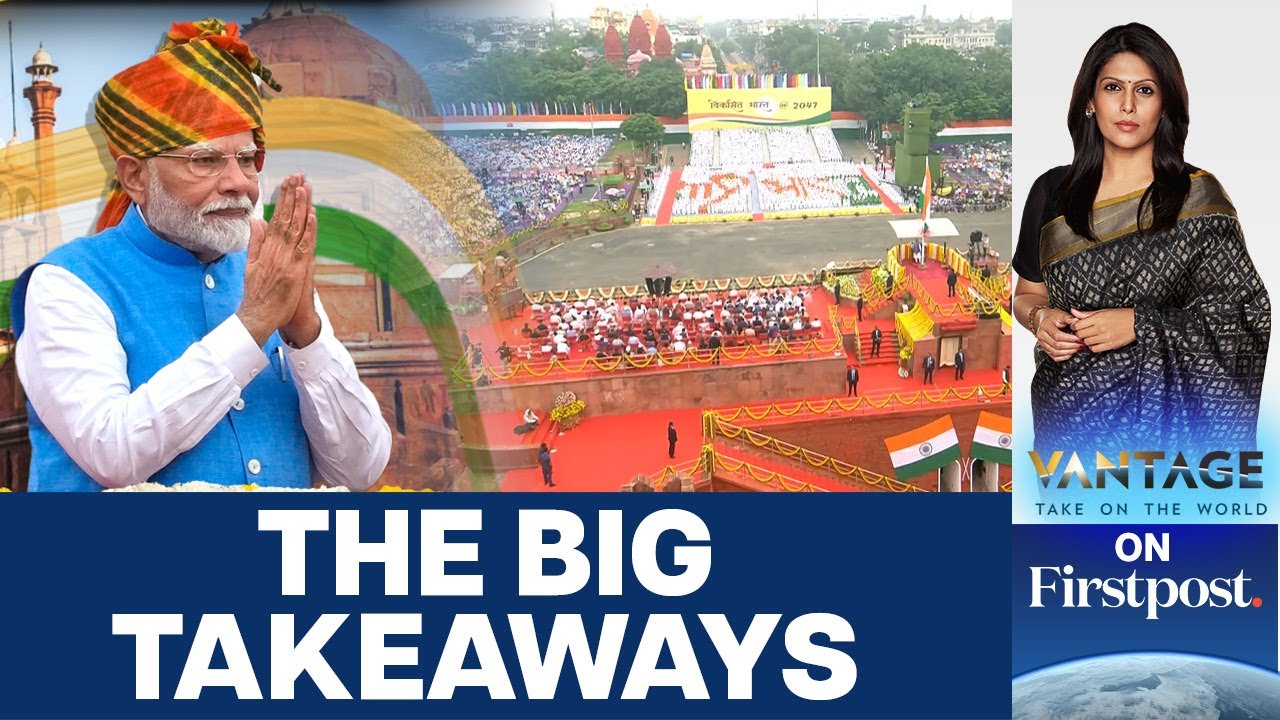100 days of Modi 3.0 | How the economy performed | GDP Growth | Economic Brief
Summary
TLDRThe Economic Brief discusses India's economic progress under Modi 3.0, with emphasis on infrastructure investment and social initiatives like Aayushman Bharat. It also addresses Bangladesh's economic crisis, seeking a $5 billion bailout, and Sri Lanka's economic challenges ahead of its presidential elections. Additionally, it highlights Jamshed G Tata's philanthropic legacy, being the world's greatest philanthropist, having donated over $100 billion adjusted for inflation.
Takeaways
- 📈 The first 100 days of Modi 3.0 government saw significant economic activities with the Sensex rallying 8.2% and Forex reserves reaching a record high of $689 billion.
- 🏗️ The government is heavily investing in infrastructure with projects worth $180 billion launched, focusing on capex to stimulate the economy.
- 💸 Fiscal consolidation remains on track despite heavy spending, indicating a balanced approach to economic management.
- 👵 The government extended financial support to senior citizens over 70 through the Aayushman Bharat insurance scheme, irrespective of their community background.
- 🏡 A substantial amount, about $65 billion, is being allocated for housing projects, aiming to build 30 million houses under the Pradhan Mantri Awas Yojana.
- 💼 The unified pension scheme has been restored without adding fiscal pressure, ensuring benefits for citizens.
- 📉 Inflation is coming down, which may allow for aggressive interest rate cuts by the RBI in the coming months, supporting the stock market.
- 🌐 The US monetary easing could positively impact capital flows to India, as the US dollar is expected to weaken, and capital outflow from emerging markets is likely to reduce.
- 🇧🇩 Bangladesh is facing an economic crisis, seeking a $5 billion bailout, which could disrupt regional trade and supply chains, especially in the garment industry.
- 🇱🇰 Sri Lanka's economy is a key issue in the presidential elections, with the country having defaulted on its sovereign obligations and requiring IMF and World Bank support for recovery.
Q & A
What are the key highlights of the first 100 days of Modi 3.0 government?
-The Modi 3.0 government has made significant strides in the economy, with the Sensex rallying about 8.2%, Forex reserves reaching a record high of $689 billion, and massive investments in infrastructure projects worth $180 billion.
How is the government's focus on capex reflected in the first 100 days of Modi 3.0?
-The government is heavily investing in capital expenditure, with projects worth $180 billion already launched in the first 100 days, indicating a strong infrastructure push.
What social initiatives has the Modi government undertaken in its first 100 days?
-The government has extended the Aayushman Bharat insurance scheme to all senior citizens above the age of 70, irrespective of their community, and is planning to build 30 million houses under the Pradhan Mantri Awas Yojana.
How is the fiscal consolidation path of the government during the first 100 days of Modi 3.0?
-Despite heavy spending on infrastructure, the fiscal consolidation path seems to be in line, with the government managing its fiscal consolidation effectively.
What is the current state of Bangladesh's economy as discussed in the script?
-Bangladesh is facing an economic crisis, seeking a $5 billion bailout from multilateral institutions and lenders, with high inflation, a rising trade deficit, and disruptions affecting its garment exports.
What are the potential impacts of Bangladesh's economic instability on South Asia?
-Bangladesh's economic instability could disrupt trade routes and supply chains, particularly in the garment industry, increase migration pressure, and negatively affect the investment climate.
What is the role of Muhammad Yunus in Bangladesh's current economic situation?
-Muhammad Yunus, as the chief adviser of Bangladesh, has indicated that his government would prioritize economic reforms to restore macroeconomic stability and sustained growth.
What are the key challenges Sri Lanka is facing in its economic recovery?
-Sri Lanka is grappling with high inflation, a depreciated currency, and overdependence on bailouts. The next president will need to address these issues while increasing Forex reserves.
How did Jamshed G. Tata become the world's greatest philanthropist?
-Jamshed G. Tata donated over $12 billion US adjusted for inflation, which placed him above American tycoons like Bill Gates and Warren Buffet. His philanthropic efforts included establishing the JN Tata Endowment and contributing to the creation of premier institutes in India.
What is the significance of Jamshed G. Tata's philanthropic activities?
-Jamshed G. Tata's philanthropic activities are significant as they laid the foundation for a culture of giving in India, creating systemic changes in fields affecting common people and establishing institutes like the Indian Institute of Science and Tata Memorial Hospital.
Outlines

This section is available to paid users only. Please upgrade to access this part.
Upgrade NowMindmap

This section is available to paid users only. Please upgrade to access this part.
Upgrade NowKeywords

This section is available to paid users only. Please upgrade to access this part.
Upgrade NowHighlights

This section is available to paid users only. Please upgrade to access this part.
Upgrade NowTranscripts

This section is available to paid users only. Please upgrade to access this part.
Upgrade NowBrowse More Related Video

SPEECH SAVVY | PALKI SHARMA : Modi's India On Right Path! (English Subtitles)

Modi on Independence Day: Uniform Civil Code, Economy, Olympics & More | Vantage with Palki Sharma

Trump trade war: Modi’s moment for Farm reform despite personal risk

ENGLISH SPEECH | PALKI SHARMA: India's Right Path (English Subtitles)

ETWLF 2024 | Destination India: Driving tourism to new heights with Minister Gajendra Shekhawat

J Sai Deepak | Government Protect minority and rule majority
5.0 / 5 (0 votes)